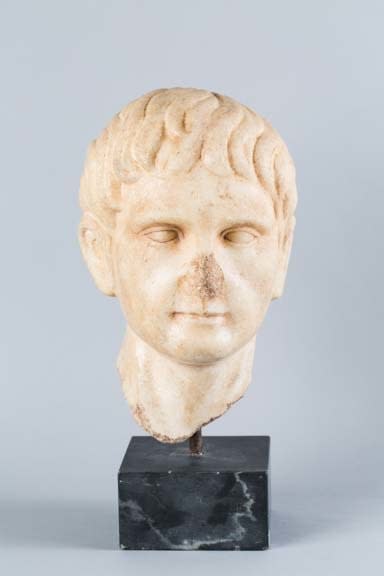Bust of A Young Augustus, 50 BCE - 100 CE
Marble
CB.3182
This head presumably is a fragment of a larger lifelike portrait of a young boy. From the defining stylistic elements - such as the unique “swallow-tail” fringe formed by his...
This head presumably is a fragment of a larger lifelike portrait of a young boy. From the defining stylistic elements - such as the unique “swallow-tail” fringe formed by his locks of hair and his characteristically youthful features - it can be suggested that this may be a pre-principate portrait of the first Roman emperor, Augustus Caesar –born Gaius Octavius– (63 B.C.-14 A.D.)). This representation may precede the "Prima Porta" type of Augustian imagery, which was created as an expression of the virtues of humanity and responsibility characteristic of a good prince and first citizen, and was very often employed in effigies of the Emperor. The case may well be that here we have the emperor depicted young to reflect his spirit, strength and vitality. With a relaxed expression, a firm gaze (which we see again later in the prima porta type) and smooth, distinctive hair - this portrait transmits an air of sublime tranquility.
